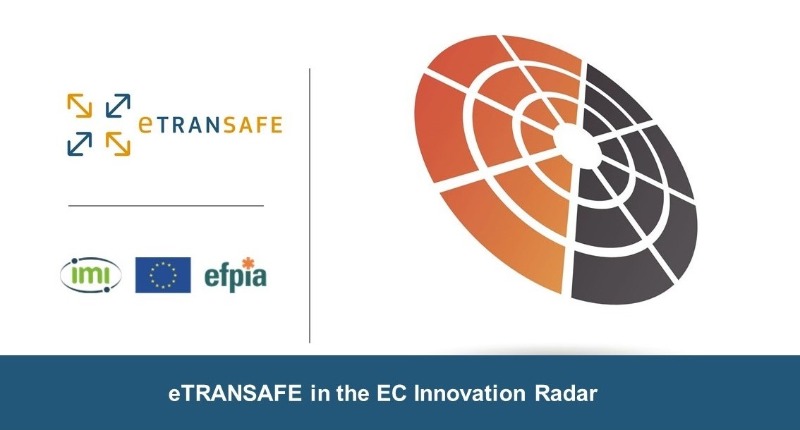
03/08/2020 - General information
The Innovation Radar, a European Commission initiative to identify high potential innovations and innovators in EU-funded research and innovation framework programmes, has selected two innovations developed by the GRIB in the project eTRANSAFE to be included on the Innovation Radar platform:
These innovations, stemming from the project work, have been classified by the Innovation Radar as Exploring innovations in the early phases of technological readiness and have been published on the EU-funded innovations website on July 20th 2020, thus joining the 3600+ EU-funded innovations already showcased on the platform.

Preclinical text mining solution for treatment response
A Preclinical Text Mining Pipeline has been developed to capture expert conclusions for treatment-related findings from animal toxicology study reports into the eTRANSAFE Preclinical Database in a consistent, structured, machine-readable format. This innovation was led by Laura I. Furlong, head of the Integrative Bioinformatics group of GRIB (IMIM-UPF) jointly with researchers of the BSC, Lhasa Limited and PDS Consultants and includes text mining tools aimed at extracting expert conclusions from animal toxicology study reports into a novel "Study Report (SR)-Domain" template, as a proposed additional domain to SEND, for integration into the cloud-hosted eTRANSAFE Preclinical Database Platform. Read More
Advanced in silico modelling to predict toxicity
Manuel Pastor, head of the PharmacoInformatics group of GRIB (IMIM - UPF) has led the development of Flame, an advanced modelling framework for the development and application of predictive models. This software allows to develop machine learning or other types of predictive models and encapsulate them in self-contained predictive engines, which can be easily transferred by Internet. This facilitates the collaboration between academic and industrial partners, since models generated using open data can be easily distributed and used in production. Moreover, models installed locally can be easily re-trained with corporate (often confidential) data to further improve their quality.
Flame incorporates all the tools required to build predictive models starting from a collection of annotated chemical structures and supports natively most widely used molecular descriptors and machine learning methods. It also incorporates innovative model combination strategies for supporting multi-level modelling. Flame is a web-application with a user-friendly graphical interface which can run in a desktop computer or be deployed in a server to run predictions in all the computers connected to the company intranet. This modelling framework is being used for building predictive models for different types of toxicological endpoints and can even be applied to predict other biological properties of interest.
Servei de Comunicació:
Marta Calsina Freixas(ELIMINAR)
Tel:
(+34) 93 316 06 80
Doctor Aiguader, 88
08226 Barcelona
© Institut Hospital del Mar
d'Investigacions MèdiquesLegal Notice and Privacy Policy | Cookie Policy | Site Index | Accessibility | Find Us | Contact